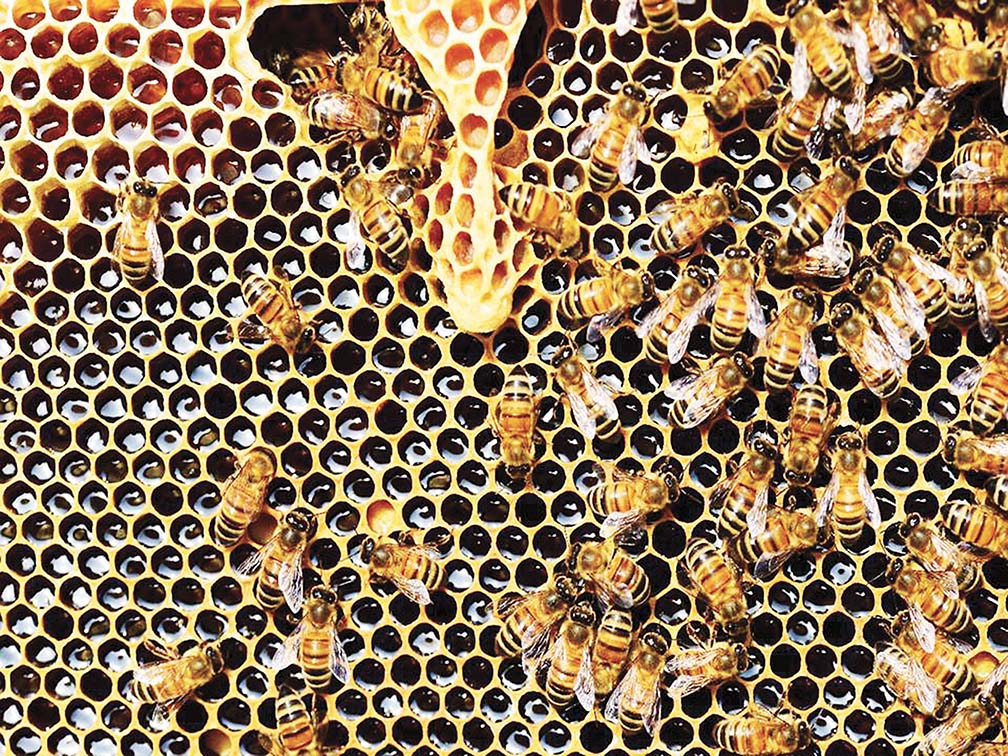Nuclear tech detects food authenticity (it is not only for power plants)
About 82% of honey brands and 80% of vinegar brands sold in the Philippines are fake. Most of the honey are from sugar or corn, while vinegar had been adulterated or composed of synthetic materials.
The Philippine Nuclear Research Institute (PNRI) of the Department of Science and Technology (DOST) disclosed these findings based on its researches that used isotope techniques.
Yes, nuclear science does not only involve nuclear power—the controversial application of nuclear technology that is the most well known in the country. It is also used in other applications, including food authentication.
The DOST–PNRI researchers were able to uncover fraudulence in the honey and vinegar businesses in the country through the use of isotope–based analytical techniques.
This analysis allows researchers to see isotopes—elements with same number of electrons and protons but different number of neutrons—which can give clues on the origin of the substance, said the DOST–Science and Technology Information Institute (STII).
ADULTERATED HONEY
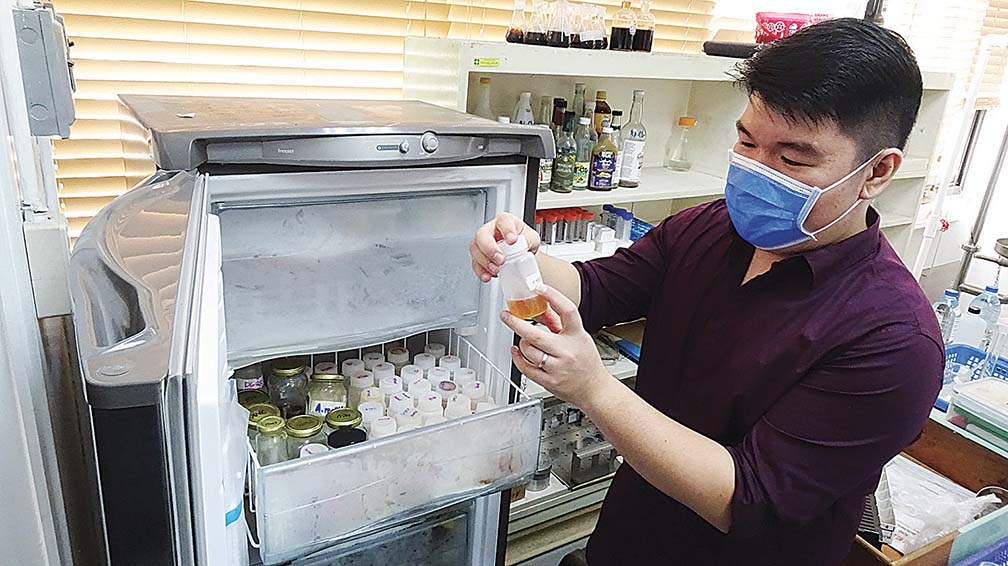
The fraudulent practice in honey production, enables the manufacturers to increase the volume of their products while reducing their production costs, DOST–STII said.
“Sixty–two out of the 76 [82%] of honey brands that were found to be adulterated were composed of 95% sugar syrup. So, they are not actually adulterated, but they are just completely purely sugar syrup,” pointed out Dr. Angel Bautista VII, Supervising Science Research Specialist and Section Head of the Nuclear Materials Research Section of DOST–PNRI, during the release of their one–and–a–half–year research in December 2020.
According to Bautista, 12 out of 16, or 75%, of local honey brands sold either in groceries or souvenir shops are “not entirely honey.”
In addition, 87% or 64 out of 74, of local honey sold online are “impure.”
However, 41 imported honey brands sold in local stores were not found to be adulterated.
The honey research found that if it is authentic, its protein content will show carbon isotopes that matches those of its sources of flowering plants and bees, Bautista explained.
However, adulterated honey have carbon isotopes which can be traced from sugarcane or corn.
“The carbon–13 signature is like a fingerprint of honey, and common adulterants like sugarcane and corn are completely different from each other. Therefore, we can differentiate one from the other,” Bautista was quoted by the DOST–STII.
“This unique isotopic signature is what we are using to tell if honey is authentic or fake,” he added.
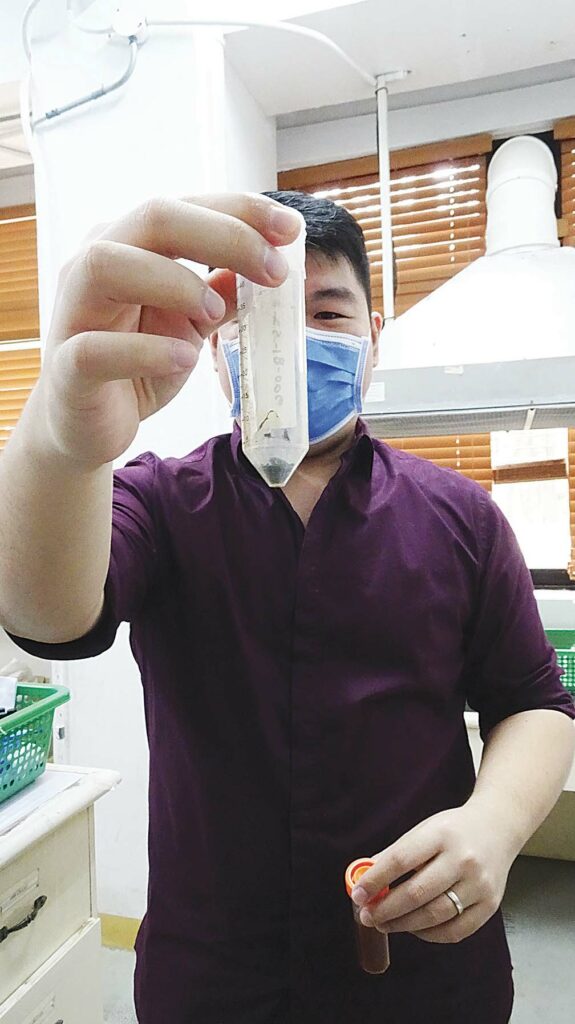
Carbon–13 is the stable isotope of carbon. Carbon–13 in a substance like honey can be used to trace the biological processes it went through.
“The problem is that people are being tricked,” Bautista said.
When told that many honey brands are cheap, DOST–PNRI Director Dr. Carlo Arcilla commented at a virtual news conference in December: “If it [price tag of honey] is very cheap, it is very fake.”
ADULTERATED VINEGAR

In the case of vinegar, Raymond Sucgang, section head of the DOST–PNRI’s Nuclear Analytical Techniques Applications Section, said, “Condiments usually undergo the process of fermentation, and the raw materials must come from fruits and other natural products.”
Sucgang’s team, which disclosed its research result in May 2019, said they distinguished vinegar and other condiments from natural or plant–based sources from those which are derived from petroleum–based sources, a news release said.
He said petroleum byproducts can have impurities and residues.
He explained that isotope technique helped detect the adulteration in vinegar through radiocarbon assay using carbon–14.
Natural vinegar from plants will have traces of carbon with natural radioactivity, unlike those made from synthetic raw materials, he added.
PLANT VS PETROLEUM ACETIC ACID
Vinegar is an acetic acid from fermented plants that have their specific isotopic signature, explained Arcilla in an interview with the Philippines Graphic on Jan. 18.
He added that acetic acid can also come from non–organic sources like purified petroleum.
Arcilla explained that it is not bad if the acetic acid would come whether from plants or “purified petroleum” because they have the same chemical application.
The problem is if it would come from petroleum with impurities.
“In the US, they make distinction between natural vinegar and vinegar from petroleum. It is in labelling,” he said.
In the Philippines, vinegar is known to be sourced from plants, such as coconut, cane or nipa palm.
“But some producers use cheap industrially produced acetic acid, the refined or processed petroleum” and label the product as vinegar, without indicating they are from petroleum, he said.
HONEY PROJECT MOTIVATION
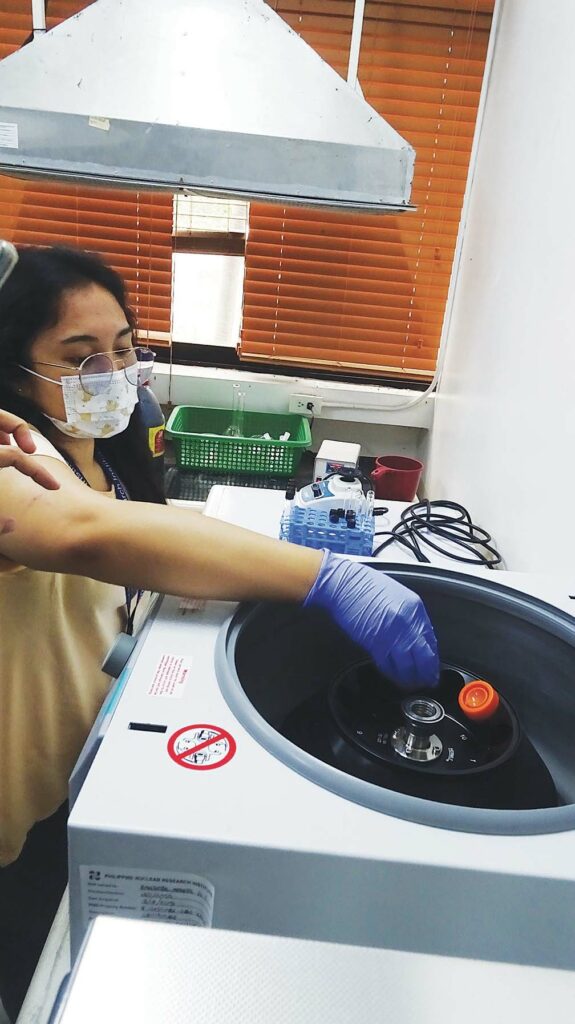
The P4.26–million honey–authentication project’s primary motivation started with DOST–PNRI’s collaboration with Dr. Cleofas Cervancia, professor emeritus of University of the Philippines Los Baños.
Cleofas is a foremost bee and honey scientist in the Philippines and a very active officer of several beekeeping associations in the country and abroad.
“The problem of adulterated honey was already known then, but it was not clear how bad the problem was. Through our stable isotopic testing capabilities in DOST–PNRI, we had the opportunity to answer this question and potentially provide a solution to the problem,” Bautista told the Philippines Graphic on Jan. 18.
It boosts immunity and is used for traditional cures because of its antibacterial and antiviral properties.
Especially in this time of the coronavirus pandemic, people resort to various preventive measures and cures to increase their immunity against the coronavirus. These options include honey.
Bautista said that impure honey can seriously damage the local industry because it can pull down the price of the product.
Fake honey can be sold as low as one–third of the original price of the authentic honey.
“Imagine, incomes that are supposed to be for our honest beekeepers and honey producers are being lost due to adulteration and fraud. This is affecting our local honey industry so badly that we estimate that they are losing P200 million per year,” Bautista lamented.
STRICTER POLICY NEEDED
Both the findings on honey and vinegar were submitted to the Department of Agriculture–Bureau of Agriculture and Fisheries Standards (DA–BAFS) and the Food and Drug Administration.
Bautista said the DOST–PNRI refuses to disclose the companies that produce or sell adulterated or fake honey.
“If we just release the names of the companies, they may stop for a while. But no one can stop them from faking honey again in the future. If we incorporate these isotope–based standards into our regulatory system and the Philippine National Standards [PNS], then we think it will be the long–lasting solution to this problem,” Bautista said.
The researchers called for “stricter policies, regulation, and control measures to protect the honey and vinegar industries and buyers,” he said.
“You may be buying honey for its wonderful health benefits, but because of adulteration, you may actually just be buying pure sugar syrup. Consuming too much pure sugar syrup can lead to harmful health effects,” he added.
The DOST–PNRI’s recommended revision in the standards was to include carbon–stable isotope parameters in the “Essential Composition and Quality Factors” Section, Bautista told the Philippines Graphic.
Another is the addition of the stable isotope analysis in the “Methods of Sampling and Analysis” Section of the PNS on Honey.
The proposed revision passed the pre–assessment and prioritization criteria of DA–BAFS and is now included in the 2022 priority list of DA–BAFS, he noted.
NEXT: KETCHUP, ‘PATIS,’ ‘TOYO’
DOST–PNRI researchers are also developing isotope analytical techniques for use in detecting synthetic byproducts in other condiments, such as ketchup, patis or fish sauce, and toyo or soy sauce, an earlier DOST–PNRI news release said.
“Ketchup is already cheap but it is still being faked,” Arcilla said.
Work on toyo and ketchup has already started, he told the Philippines Graphic.
Bautista said the next food products his team is targeting for authentication are carabao mangoes (e.g., Guimaras mango), coffee beans (e.g., Sagada coffee), cacao beans (e.g., Davao cacao), organic and halal food.
ISOTOPE CENTER
Arcilla said the recently approved DOST–PNRI isotope center’s state–of–the–art equipment, such as the liquid scintillation counter and the isotope ratio mass spectrometer, will be used to study the isotope composition of the condiments, particularly carbon–13 and nitrogen–15.
He said the first labs were donated by the International Atomic Energy Agency (IAEA), which also provided the training, as part of its Atoms for Peace and Development mission.
The other labs were purchased by the DOST–PNRI.
The DOST–PNRI’s analytical laboratories and services are certified under ISO 17025:2005 and under ISO 9001:2015.
Bautista pointed out that DOST–PNRI’s long–term vision is to establish the “National Isotopes Center,” which can help authenticate different food types and even other materials (e.g., for weaving, drugs, etc.).
“The center will be very beneficial for Philippine products that have ‘world–class’ potential because the capabilities offered by the center will ensure the traceability of our prized products, he said.
This means, he said, the mangoes being sold as “Guimaras mangoes,” indeed come from Guimaras, the same with Sagada coffee, Davao cacao, and many others.
Bautista told the Philippines Graphic that the DOST–PNRi is starting to collaborate with the Intellectual Property Office of the Philippines “to establish the center as one of the certification laboratories for ‘Geographical Indication,’ a type of intellectual property that grants premium on a product based on where it was produced.”
HOW HONEY IS MADE
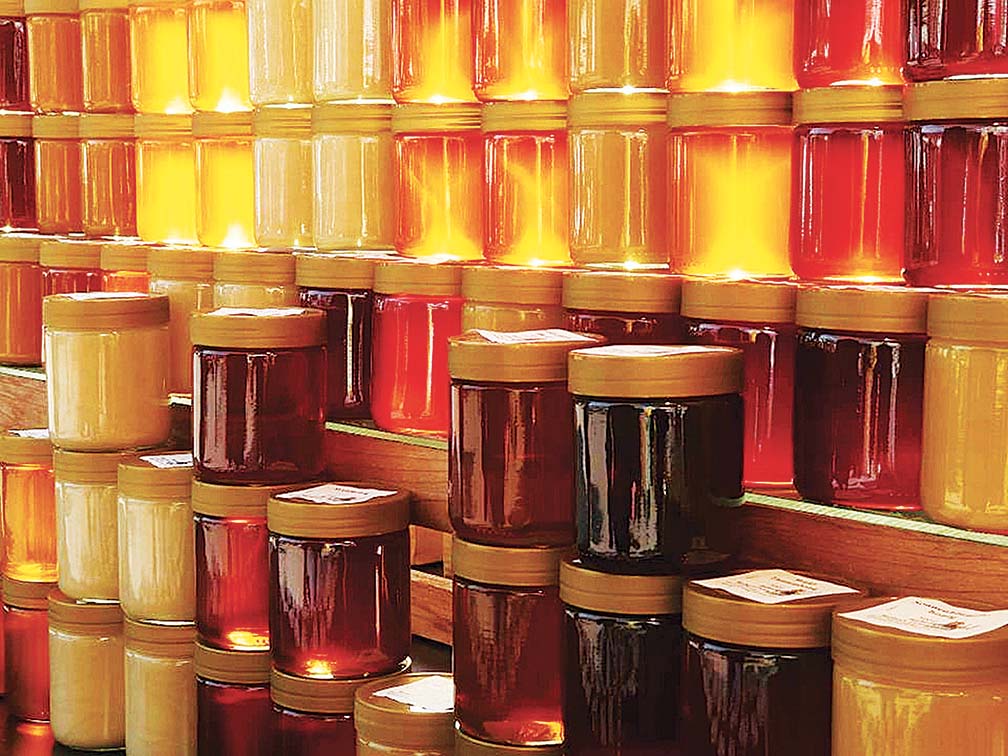
To make honey, the bees sip nectar from flowers using their straw–like tongue called proboscis. The enzymes in their gut will then process the nectar.
Afterwards, they pass it on to other bees in their colony. This process, called regurgitation, turns complex sugars of nectar into simple sugars.
Next, the bees store the regurgitated nectar in their hive and reduce its water content by flapping their wings. To complete the process, they cover the hive with beeswax.
These processes have fingerprints of carbon isotopes which are important for checking the authenticity of honey.


